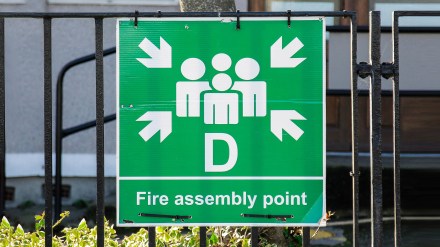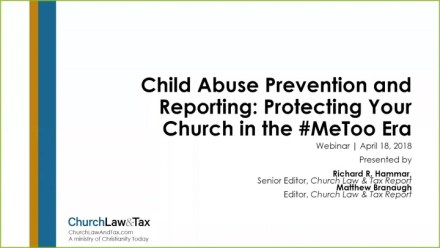David Fletcher has two rules when it comes to paying pastors and other church staff: Be as generous as you can, and avoid the “stupid tax.”
That means paying as fair a wage a possible, says Fletcher, a veteran executive pastor and founder of XPastor.org. It also means not attempting to save a few bucks, only to drive great pastors or church staff away—and then deal with the resulting costs (or “stupid taxes”) needed to search, hire, and train their replacements.
Many churches struggle to know how much to pay their pastors and church staffers—and they don’t have the expertise to put together a comprehensive plan to treat pastors and church staff well, Fletcher says.
In response, Fletcher hosted a series of “Smart Money for Church Salaries” workshops across the country. Based on his book by the same title, the workshop gave churches of every size the tools they need to treat their staff and pastors well.
Fletcher talked with us about some of the key issues the workshops covered.
What are some of the issues that churches struggle with when it comes to compensation?
The first issue is “how do we get accurate or helpful numbers to compare our salaries to?” The average person in the pews is a little leery of simply comparing salaries to other churches. In the book, I lay out a way to find comparable salaries through nonprofits and local organizations that people can relate to. And those are some very fair numbers.
A second one is the ministerial housing allowance and answering the question of “who is a pastor?” A church might have pastors, but they also may have ministry directors. Do they qualify for a housing allowance?
A third issue is the ministerial housing form. A bad ministerial housing allowance form can really cheat a pastor out of substantial tax savings. I give an example in the book, based on several case studies, of a fictional pastor named Liz Jackson, who is the family pastor at a church. She turns in a form that claims a housing allowance of $22,000. In the book, we show that she could have had a housing allowance of $35,000—which would meant her taxable income was $70,000. But her taxable allowance should have been $57,000. That was free money, right on the table.
You talk about something called the “Big Burrito” salary spreadsheet. What is that?
It’s the total compensation we’re going to pay to a pastor or staff member. Most people think if we’re going pay a staff member $40,000, then that’s all we have to worry about when hiring them. But if the church pays health insurance and other benefits, the actual cost of the position is $56,000. So when a church talks about adding staff, they have to look at the big-picture number.
What are some benefits that churches overlook for staff members?
Here’s one: the tax-free cell phone reimbursement. It’s tax-free money and a great benefit to almost anyone in your church who’s using their personal cell phone for church work. And don’t forget to give this benefit to everyone—including the church’s facility workers. They’re using their personal cell phones to conduct church business.
Another area would be life insurance. Churches can give $50,000 of tax-free life insurance to staff members. But for another $100 a year of taxable income, a church could double or triple that amount. It’s taxable income, but a great benefit for not much money.
You talk about having a salary range for every job at the church. Talk a bit more about that.
A church should have a salary range for each job and split it into quads. A new seminary graduate, for example, should start in quad one. But a staff member with 10 years of experience is probably going to start in quad three.
The book shows how to create a compensation grid for every position in the church—from senior pastor all the way down to facility worker—so that you can ask yourselves, “What are we going to start a senior pastor at? What are we going to start an admin assistant at? A ministry coordinator? Pre-school teacher?” There should be a salary range for every job.
How can a church set those salary ranges?
A couple of sources. You can find out what local churches pay and what churches around the country pay. Then ask, “What’s our cost of living?” If you live in Orlando, for example, the cost of living is about 6 percent below the national average. But if you go to southern California, your housing cost alone is much higher than in other parts of the country.
Other questions to ask are: “What is the maximum we want to pay for this job? How do salaries at our church compare to the salaries paid at local nonprofits?”
Churches don’t want to pay too much. But they don’t want to pay so little that the pastor is moonlighting at Starbucks.
Should churches be generous when they can be generous?
I say be generous across the board: “Let’s pay as much as we think is fair and reasonable, and give good benefits. Give pastors and staff vacation time and sick time and jury duty time. What we are looking for is emotional and spiritual health as a result.” Fair benefits could be vision insurance, could be dental insurance, a retirement plan—so that the pastor or staff person realizes, “I’m going to work here for 20 years, and I’ll have a fair retirement when I leave.”
One side of fair compensation is paying people well, and the other side seems to be making sure we have the right people doing the right kinds of things.
That’s right. If you take a pastor who’s really good at counseling and put them in an administrative role, they’re going to be working with their non-dominant hand all week long.
Put that person in a spot where they’re maximizing their gifts. That’s what I tried to do as an executive pastor. For years I had a great, loyal staff who loved to do their jobs. That doesn’t mean we didn’t have problems, but the staff had their sense of fulfillment. That’s where we want to see people.
I think it really gets down to this: Are we living out kingdom ethics in our churches and in compensation? Are we really seeking to consistently apply the principles of Scripture? So many churches hold the Bible up as inerrant and authoritative, but they’re not living it out in how they treat staff.


















